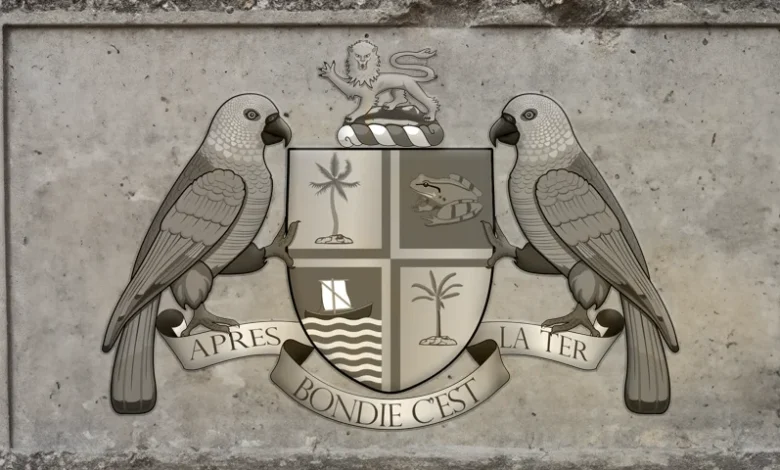Dominica’s Coat of Arms

Dominica’s Coat of Arms was adopted on July 21, 1961, and is an essential emblem that reflects the island’s rich agricultural heritage, biodiversity, and history. At its core, the coat of arms emphasizes the nation’s close connection to the land through Dominica’s national motto, “Après Bondie C’est La Ter,” which translates to “After God, the Earth.” This motto highlights the significance of agriculture and the island’s reliance on natural resources.
Elements of the Coat of Arms
The coat of arms is divided into four quadrants. Each quadrant represents a key aspect of Dominica:
- Coconut Tree: Representing the island’s agricultural wealth and tropical environment.
- Crapaud (Frog): This native species, also known as the Mountain Chicken, symbolizes the island’s unique biodiversity.
- Canoe on the Caribbean Sea: A nod to the island’s maritime heritage and its link to its indigenous people, the Kalinago.
- Banana Tree: Symbolizing the importance of the banana industry to Dominica’s economy.
Two Sisserou Parrots, Dominica’s national bird, support the shield, symbolizing resilience and the island’s rich fauna. Above the shield sits a golden lion, symbolizing the island’s colonial ties and Britain’s historical influence.
The Coat of Arms and Cultural Heritage
The coat of arms is central to Dominica’s cultural heritage, representing the island’s natural resources and people’s connection to the land. As a national emblem, it is frequently highlighted during significant events like National Emblems Week, when Dominicans reflect on the national symbols that define their identity.




